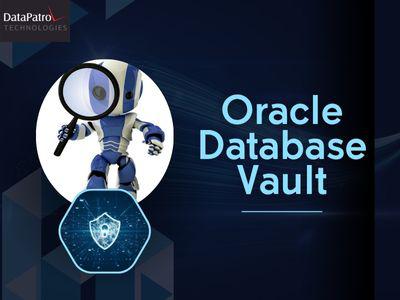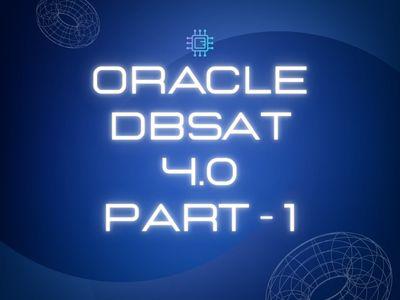- August 12, 2025
by Gauri Wahab - Sr. Sales & Marketing Officer
Discover how Oracle Database Vault is revolutionizing data security by protecting organizations from their greatest vulnerability: privileged users with unlimited access to sensitive information.

Introduction: The Greatest Security Threat Comes from Within Imagine discovering that your most trusted database administrator has been accessing customer financial records without authorization, or that a privileged user has been extracting sensitive employee data for personal gain. These scenarios aren't hypothetical—they represent the harsh reality that 60% of data security breaches originate from insider threats, often involving privileged users who have legitimate access to systems but misuse their authority. Traditional database security focuses on external threats, building walls to keep outsiders away. But what happens when the threat comes from someone who already has the keys to the kingdom? This is where Oracle Database Vault transforms the security paradigm, providing unprecedented protection against insider threats while maintaining operational efficiency. Oracle Database Vault doesn't just secure your data—it redefines how organizations think about trust, access, and accountability in the digital age. What is Oracle Database Vault? Oracle Database Vault is a sophisticated security solution that creates an additional layer of protection within Oracle databases by implementing advanced access controls that restrict even privileged users from accessing sensitive data inappropriately. Think of it as a highly intelligent security guard that not only knows who should access what data, but also understands when, where, and why that access should occur. Unlike traditional database security that operates on an "all-or-nothing" approach for privileged users, Database Vault implements the principle of least privilege at the most granular level, ensuring that even database administrators cannot access application data without proper authorization and business justification. Core Security Philosophy Database Vault operates on three fundamental security principles: Separation of Duties: No single individual should have complete control over critical data Least Privilege Access: Users receive only the minimum access necessary for their legitimate business functions Defense in Depth: Multiple layers of security controls work together to protect sensitive information The Insider Threat Reality: Why Traditional Security Fails Understanding Privileged User Risks Privileged users—including database administrators, system administrators, and application owners—traditionally have broad access to organizational data. While this access is necessary for system maintenance and support, it creates significant security vulnerabilities: The Trust Paradox Organizations must trust certain individuals with extensive system access to perform their jobs effectively. However, this trust can be exploited either maliciously or inadvertently, leading to data breaches, compliance violations, and business disruption. Common Insider Threat Scenarios Database administrators accessing customer records out of curiosity System administrators extracting employee salary information Former employees maintaining access after role changes External consultants with temporary access exceeding their authorized scope Accidental data exposure during routine maintenance activities Compliance and Regulatory Challenges Modern regulatory frameworks—including GDPR, HIPAA, SOX, and PCI DSS—require organizations to demonstrate strict control over who can access sensitive data and under what circumstances. Traditional database security models make this compliance demonstration nearly impossible because privileged users typically have unrestricted access to all data. How Oracle Database Vault Works: Security Without Compromise Realms: Creating Secure Data Boundaries Database Vault introduces the concept of "realms"—protected zones within the database that contain related database objects such as tables, views, and stored procedures. Think of realms as secure vaults within your database, each with its own access rules and authorization requirements. Real-world Application A large healthcare organization implements realms to separate patient medical records, billing information, and research data. Even though the same database contains all this information, Database Vault ensures that billing department staff cannot access medical records, and research teams cannot view patient billing details. Business Impact • Data Segregation: Sensitive information remains isolated from unauthorized access • Regulatory Compliance: Clear audit trails demonstrate proper data protection • Operational Efficiency: Legitimate users maintain necessary access without security friction Command Rules: Controlling Database Operations Command rules provide fine-grained control over database operations, determining when and under what conditions specific database commands can be executed. These rules go beyond simple user permissions to consider context, timing, and business logic. Practical Implementation A financial services company uses command rules to prevent data exports during non-business hours. While database administrators can perform maintenance activities at any time, extracting customer financial data is only permitted during business hours when supervisory oversight is available. Security Benefits • Contextual Access Control: Permissions adapt based on time, location, and business context • Automated Enforcement: Security policies execute automatically without human intervention • Comprehensive Monitoring: All attempts to access protected data are logged and auditable Factors: Dynamic Security Conditions Factors are named variables that Database Vault evaluates when making access control decisions. These can include time of day, day of week, IP address, database user session details, and custom business logic conditions. Strategic Application A multinational corporation uses factors to ensure that sensitive financial data can only be accessed from specific office locations during business hours. Remote access to this data requires additional approvals and justification, even for privileged users. Authorization Rules: Multi-Person Integrity Database Vault supports multi-person authorization requirements, ensuring that access to highly sensitive data requires approval from multiple authorized individuals. This creates a system of checks and balances that prevents single-person data abuse. Enterprise Example A major retailer requires that any access to customer payment information must be approved by both a department manager and a security officer. This dual-authorization requirement ensures that customer financial data cannot be accessed by any single individual, regardless of their technical privileges. Business Benefits and Strategic Value Enhanced Data Security Insider Threat Mitigation Database Vault reduces insider threat risks by 70-80% by implementing granular controls that prevent unauthorized data access while maintaining operational efficiency. Privilege Abuse Prevention Even users with administrative privileges cannot access application data without proper business authorization, eliminating the risk of privilege abuse. Regulatory Compliance Simplification Automated Compliance Reporting Database Vault generates comprehensive audit trails that demonstrate compliance with regulatory requirements, reducing the time and effort required for compliance reporting by 50-60%. Separation of Duties Enforcement The platform automatically enforces separation of duties requirements, ensuring that no single individual can compromise critical business processes. Operational Efficiency Improvements Reduced Administrative Overhead Automated security controls reduce the manual effort required to manage data access permissions, typically resulting in 30-40% reduction in security administration costs. Streamlined Audit Processes Comprehensive logging and reporting capabilities simplify internal and external audit processes, reducing audit preparation time by 40-50%. Industry-Specific Applications Healthcare Organizations Patient Data Protection Healthcare providers use Database Vault to ensure that patient medical records can only be accessed by authorized healthcare professionals involved in patient care. Scenario: A large hospital system implemented Database Vault to protect electronic health records. The system ensures that nurses can only access records for patients on their assigned wards, physicians can only view records for their patients, and administrative staff cannot access clinical information. Results: 95% reduction in unauthorized access incidents Simplified HIPAA compliance demonstration Enhanced patient trust and satisfaction Financial Services Customer Financial Data Security Banks and financial institutions leverage Database Vault to protect customer account information, transaction histories, and personal financial data. Implementation: A regional bank uses Database Vault to ensure that customer account information can only be accessed by customer service representatives when handling active customer inquiries. Batch processing jobs can access the data only during designated maintenance windows with proper authorization. Outcomes: Zero incidents of unauthorized customer data access Streamlined regulatory examinations Enhanced customer confidence in data security Government Agencies Classified Information Protection Government organizations implement Database Vault to protect classified information and ensure that data access aligns with security clearance levels. Application: A federal agency uses Database Vault to protect sensitive citizen information, ensuring that case workers can only access files for citizens in their assigned geographic regions and that supervisory approval is required for cross-regional data access. Retail and E-commerce Customer Privacy Protection Retailers use Database Vault to protect customer personal information, purchase histories, and payment data. Use Case: A major e-commerce platform implemented Database Vault to ensure that customer service representatives can only access customer information when responding to active support tickets, and that marketing teams cannot access individual customer payment information. Technical Architecture and Integration Seamless Database Integration Database Vault integrates directly with Oracle Database at the kernel level, providing security controls that cannot be bypassed or disabled by privileged users. This deep integration ensures that security policies are enforced consistently across all database access methods. Key Technical Features: Kernel-Level Enforcement: Security controls operate at the database engine level Transparent Operations: Applications continue to function normally without modification High Performance: Minimal impact on database performance and response times Scalable Architecture: Supports databases ranging from small departmental systems to enterprise data wareh Cloud and Hybrid Deployments Oracle Database Vault supports deployment across various environments, including on-premises databases, Oracle Cloud Infrastructure, and hybrid configurations. Cloud Security Benefits: Consistent Security: Same security controls across on-premises and cloud deployments Multi-Tenant Protection: Secure data isolation in shared cloud environments Autonomous Integration: Native integration with Oracle Autonomous Database services Integration with Enterprise Security Systems Database Vault integrates with enterprise identity management systems, security information and event management (SIEM) platforms, and compliance management tools. Enterprise Integration Capabilities: LDAP/Active Directory: Seamless integration with existing identity management SIEM Connectivity: Real-time security event reporting and monitoring API Access: Programmatic configuration and monitoring capabilities Implementation Strategy and Best Practices Phase 1: Assessment and Planning (Weeks 1-4) Security Requirements Analysis Organizations begin by conducting comprehensive assessments of their current data security posture, identifying sensitive data assets, and documenting compliance requirements. Key Activities: Inventory sensitive data across all database systems Identify current privileged users and their access patterns Document regulatory compliance requirements Assess current security controls and identify gaps Stakeholder Engagement Successful implementations require strong collaboration between security teams, database administrators, application owners, and business users. Phase 2: Design and Configuration (Weeks 5-8) Security Policy Design Technical teams work with business stakeholders to design detailed security policies that protect sensitive data while maintaining operational efficiency. Configuration Activities: Design realm structures for data segregation Develop command rules for operational control Configure factors for contextual access decisions Establish authorization workflows for sensitive data access Phase 3: Testing and Validation (Weeks 9-12) Comprehensive Testing Before production deployment, organizations conduct extensive testing to ensure that security controls function properly without disrupting business operations. Testing Scenarios: Validate that authorized users can access necessary data Confirm that unauthorized access attempts are blocked Test emergency access procedures and override capabilities Verify integration with existing applications and systems Phase 4: Production Deployment (Weeks 13-16) Phased Rollout Organizations typically implement Database Vault in phases, starting with less critical systems and gradually expanding to production databases. Deployment Considerations: Start with development and test environments Implement monitoring and alerting capabilities Train database administrators and security teams Establish incident response procedures Phase 5: Ongoing Management (Weeks 17+) Continuous Monitoring and Optimization Database Vault implementations require ongoing management to adapt to changing business requirements and security threats. Management Activities: Regular security policy reviews and updates User access certification processes Security incident analysis and response Compliance reporting and audit support Measuring Success: Key Performance Indicators Security Metrics Insider Threat Reduction Organizations typically measure the number of unauthorized access attempts, security incidents involving privileged users, and data breach occurrences. Typical Results: 75-85% reduction in unauthorized data access incidents 90%+ decrease in privileged user data abuse cases Zero tolerance for undetected insider threats Compliance Metrics Audit Efficiency Database Vault significantly reduces the time and effort required for compliance audits and regulatory examinations. Measurable Improvements: 50-60% reduction in audit preparation time 40-50% faster regulatory examination processes 95%+ compliance with data protection requirements Operational Metrics Administrative Efficiency Automated security controls reduce the manual effort required for data access management and security administration. Operational Benefits: 30-40% reduction in security administration costs 60-70% decrease in time required for access management 80%+ improvement in security incident response times Advanced Features and Capabilities Multi-Factor Authentication Integration Database Vault integrates with multi-factor authentication systems to provide additional security layers for sensitive data access. Enhanced Security Features: Biometric authentication for highly sensitive data Smart card integration for government and defense applications Mobile device authentication for remote access scenarios Real-Time Monitoring and Alerting The platform provides comprehensive monitoring capabilities that enable organizations to detect and respond to security incidents in real-time. Monitoring Capabilities: Real-time access attempt notifications Automated incident escalation procedures Integration with security operations centers (SOCs) Comprehensive audit trail generation Advanced Analytics and Reporting Database Vault includes sophisticated analytics capabilities that help organizations understand data access patterns and identify potential security risks. Analytics Features: User behavior analysis and anomaly detection Access pattern visualization and reporting Risk assessment and threat intelligence Predictive security analytics Future Trends and Evolution Artificial Intelligence Integration Oracle continues to enhance Database Vault with artificial intelligence and machine learning capabilities that provide more sophisticated threat detection and automated response capabilities. AI-Enhanced Features Behavioral anomaly detection using machine learning Predictive risk assessment based on user patterns Automated policy recommendations based on data usage Intelligent threat response and mitigation Zero Trust Architecture Support Database Vault aligns with zero trust security principles, providing the granular access controls and continuous verification capabilities required for modern security architectures. Zero Trust Capabilities: Never trust, always verify access principles Continuous authentication and authorization Microsegmentation of database resources Adaptive security controls based on risk assessment Cloud-Native Enhancements As organizations increasingly adopt cloud technologies, Database Vault continues to evolve with cloud-native features and capabilities. Cloud Evolution: Container-based deployment models Serverless architecture support Multi-cloud security consistency API-first configuration and management Conclusion: Transforming Data Security Through Intelligence Oracle Database Vault represents a fundamental shift in how organizations approach data security—moving beyond perimeter-based protection to implement sophisticated, context-aware controls that protect data from both external threats and insider abuse. In an era where data breaches can destroy organizational reputation and result in massive financial penalties, Database Vault provides the comprehensive protection that modern businesses require. The evidence is clear: organizations implementing Oracle Database Vault not only achieve superior data security but also simplify compliance processes, reduce administrative overhead, and enhance operational efficiency. As regulatory requirements continue to evolve and cyber threats become more sophisticated, Database Vault provides the adaptive security foundation that enables organizations to protect their most valuable asset—their data. The question isn't whether your organization needs advanced data security controls—it's whether you can afford to operate without them. Oracle Database Vault transforms data security from a reactive cost center into a proactive competitive advantage, enabling organizations to protect their data while supporting business growth and innovation. In today's threat landscape, protecting against insider threats and privileged user abuse isn't optional—it's essential for business survival. Oracle Database Vault provides the comprehensive solution that enables organizations to maintain the trust of their customers, partners, and stakeholders while meeting the most stringent regulatory requirements. Ready to secure your organization’s future? Reach out to us today at +91 84848 39896 or info@datapatroltech.com to implement Oracle Database Vault and safeguard your most critical data assets.


